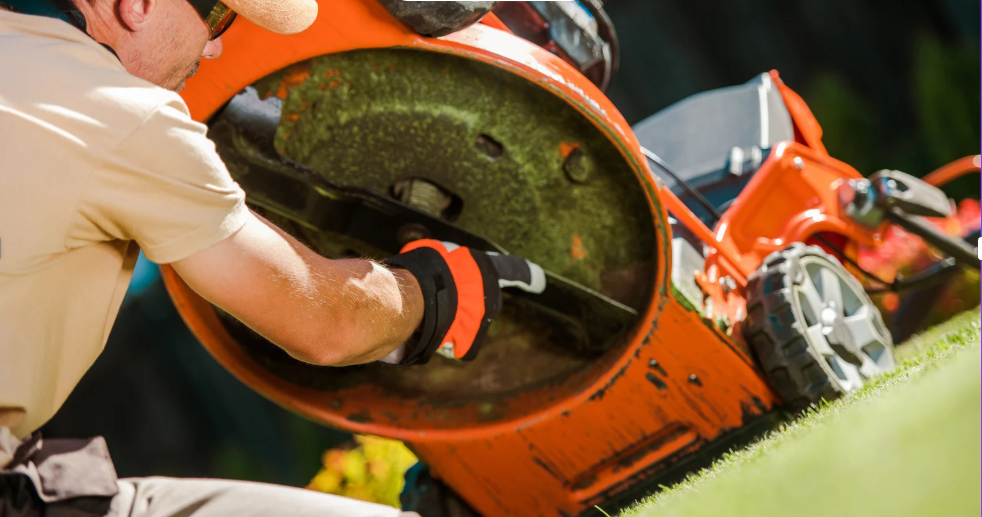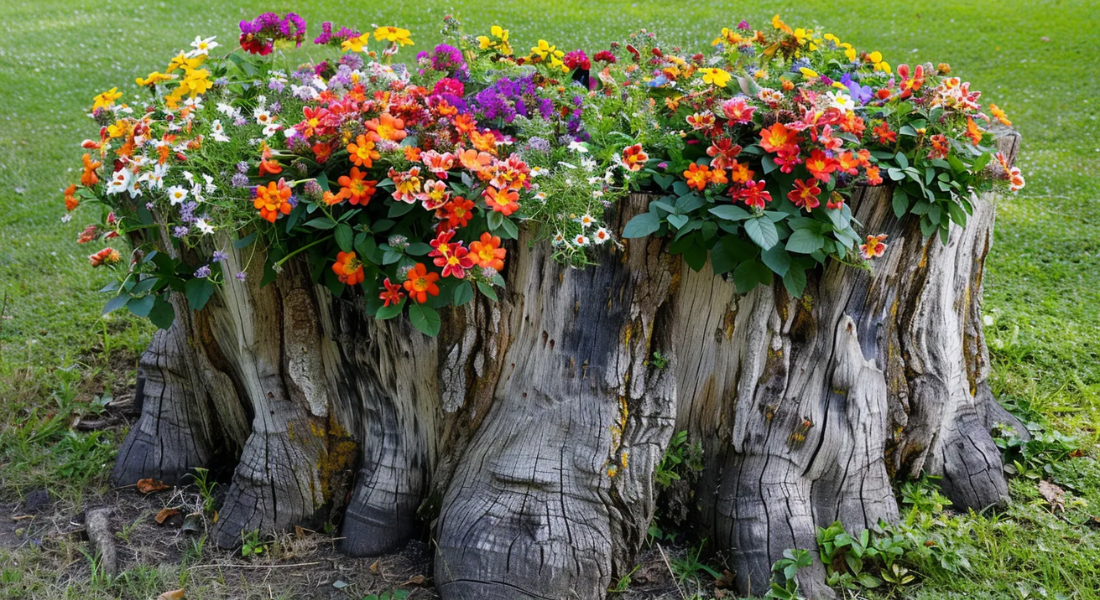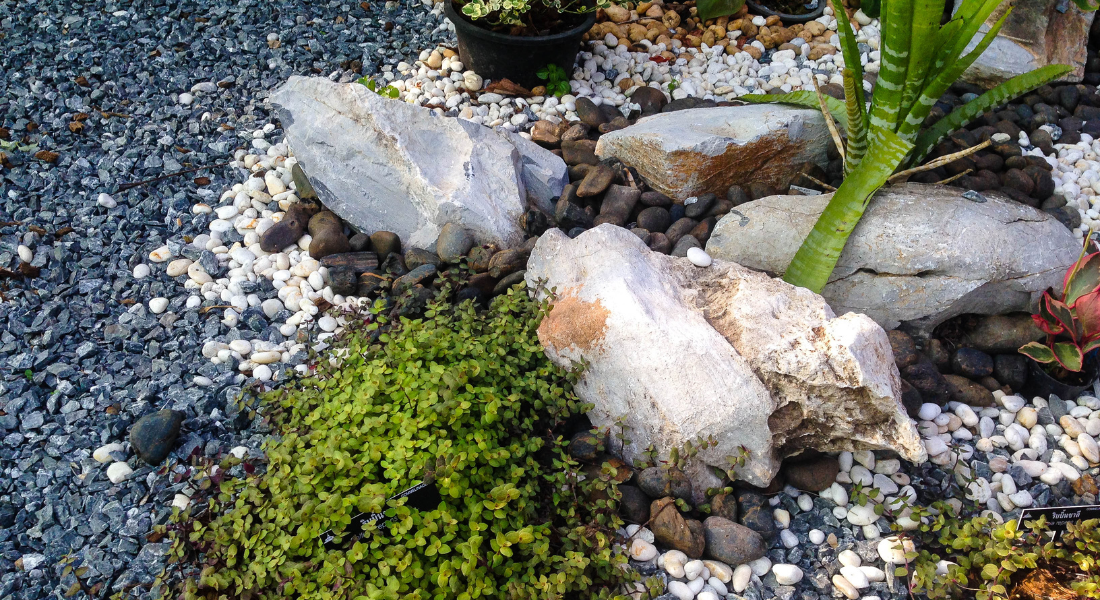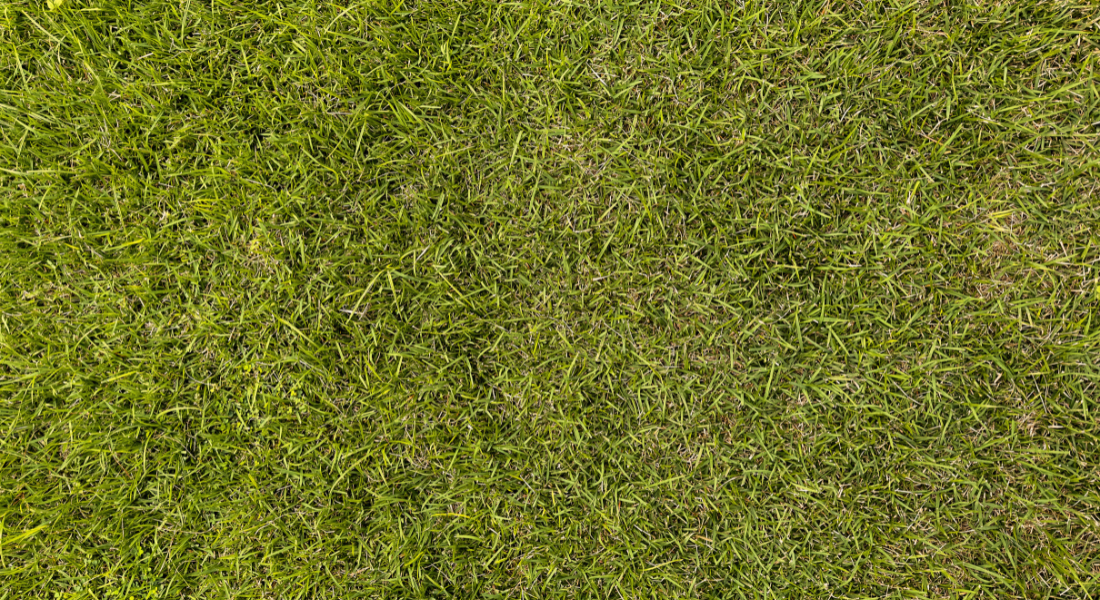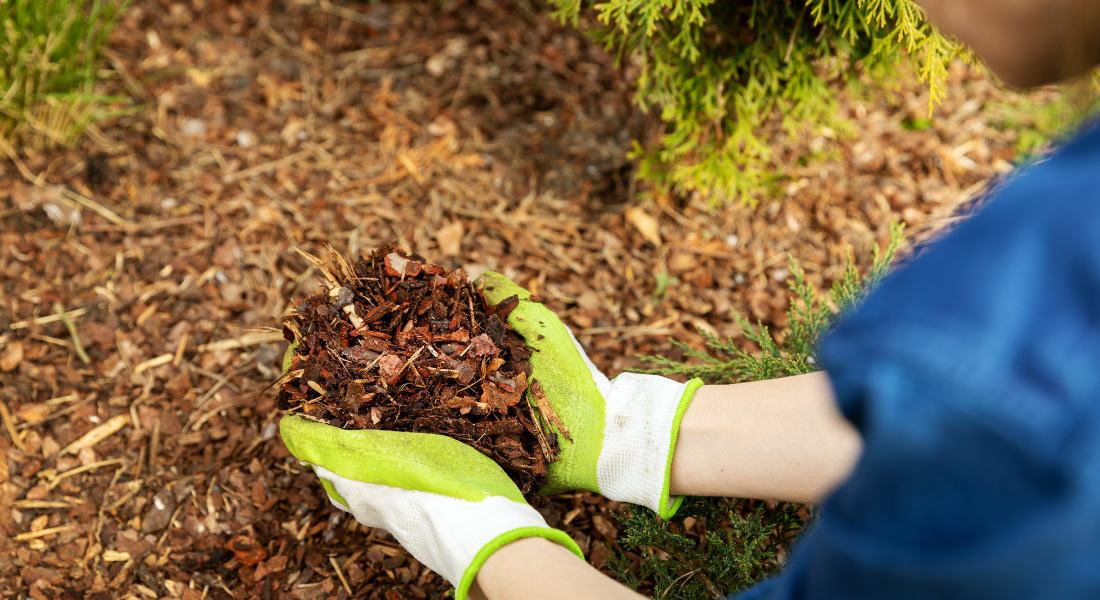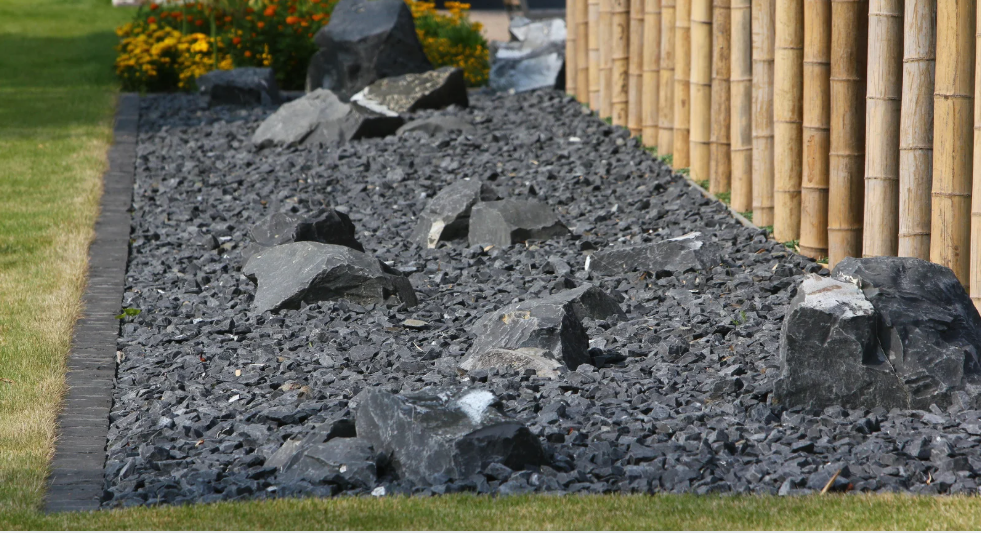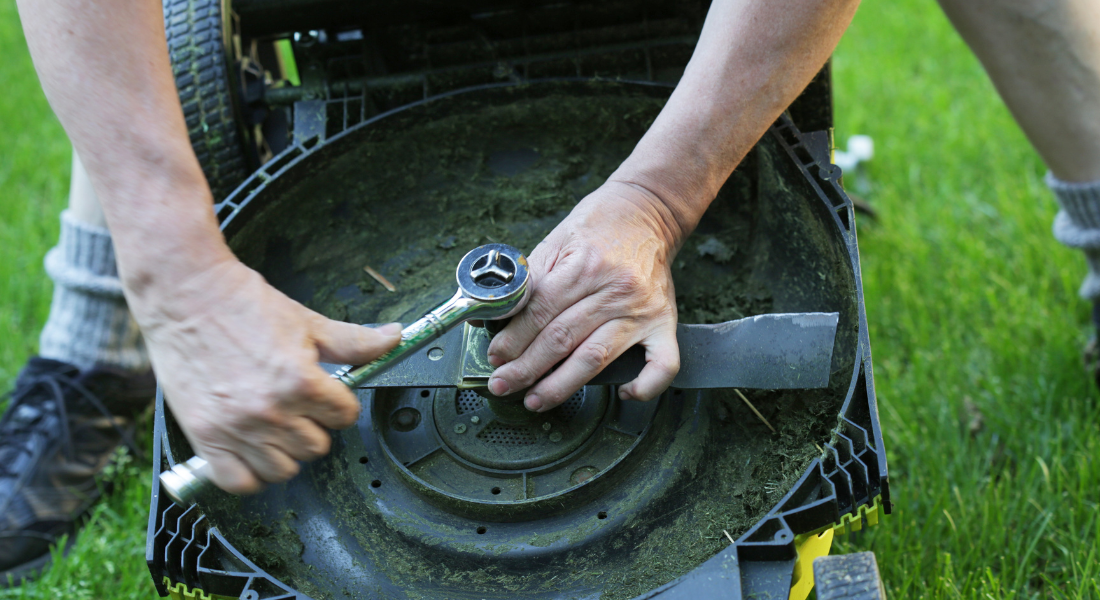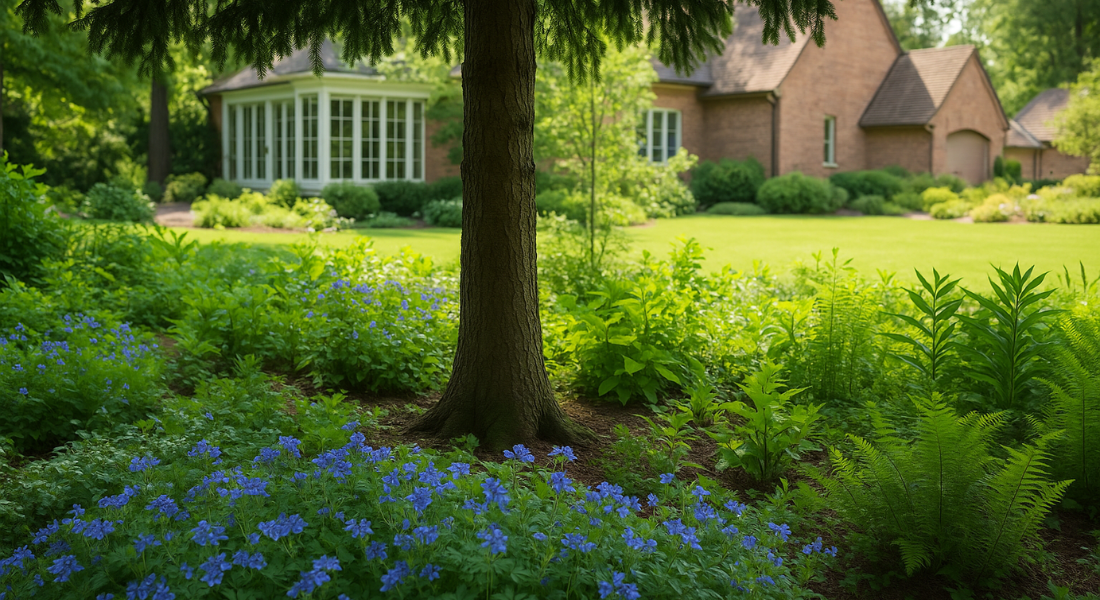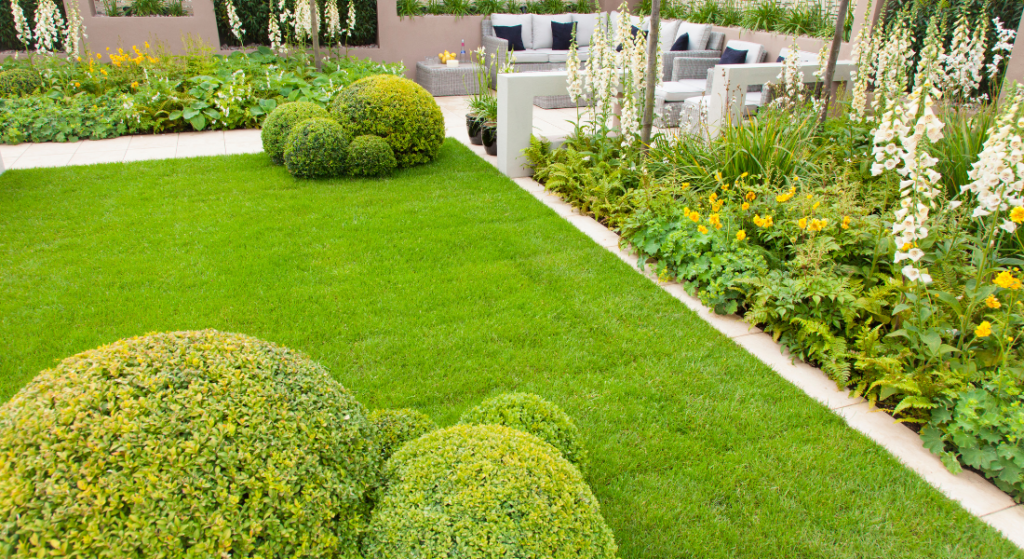Rocks or Mulch: Which is Best for Your Landscape?
Pros & Cons Of Rocks
Pros:
- Rocks will last a long time without needing to be replaced.
- Rocks only need minimal maintenance. You just need to blow out leaves and debris to prevent weeds.
- Rocks are good for areas where debris doesn’t collect easily (like pathways or around trees).
Cons:
- Dirt and leaves can still build up between the rocks. And it can be hard to clean.
- Over time, you may need to move and wash the rocks and replace the weed barrier underneath.
- Rocks can get kicked into the lawn and might damage your mower.
Pros & Cons Of Mulch
Pros:
- Easy and cheap to refresh every year.
- Easier to clean and maintain than rocks. But, more frequent.
- Mulch comes in various colors to suit your landscaping style.
- Reduces weeds and gives nutrients to the soil as it breaks down.
- Mulch reduces evaporation during hot summers, keeps plants hydrated, and insulates the soil during cold winters, protecting the roots.
Cons:
- You’ll need to replace your mulch every 1-2 years.
- Mulch can grow mold or become compacted if not maintained.
- You’ll need to weed regularly to keep your flowerbeds neat and clean.
- If you like to clean your yard using a leaf blower, then mulch might not be the best choice.
Rocks vs. Mulch: Price Comparison
Let’s say your yard needs 10 cubic yards of material. Here’s how the costs of rocks and mulch would compare over 5 years.
Mulch Costs
- Initial Cost: $30 per cubic yard x 10 yards = $300
- Annual Refresh: $30 per cubic yard x 10 yards = $300 every year
Total for 5 Years:
Initial cost: $300
4 yearly replacements: $300 x 4 = $1,200
= $1,500 for 10 cubic yards over 5 years
*This price doesn’t include installation cost. So, if you hire someone else to spread the mulch, then the price will be higher.
Rock Costs
- Initial Cost: $80 per cubic yard x 10 yards = $800
- Maintenance: Minimal, let’s estimate $50 every 2 years for cleanup or touch-ups.
Total for 5 Years:
Initial cost: $800
Maintenance: $50 x 2 = $100
= $900 for 10 cubic yards over 5 years
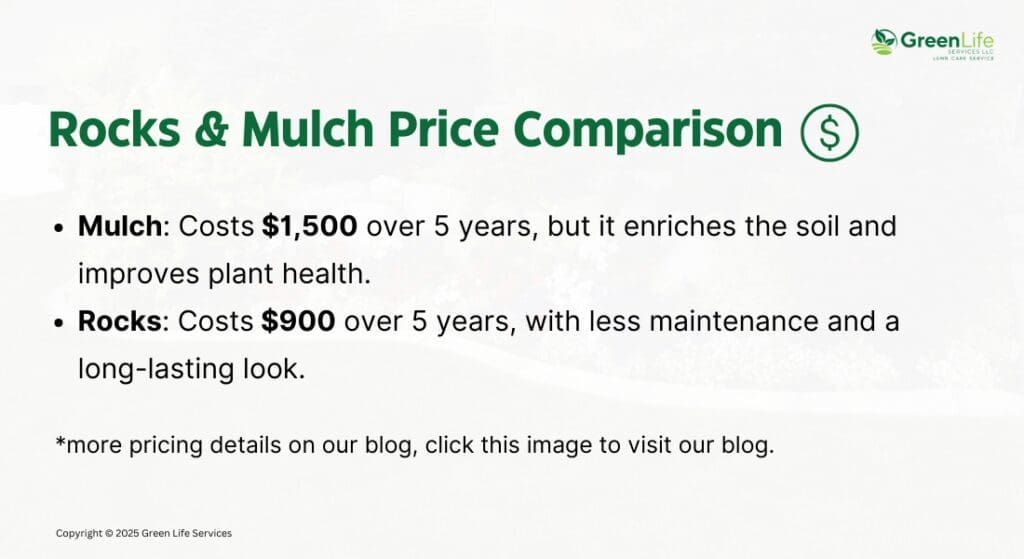
What’s the Verdict?
- Mulch: Costs $1,500 over 5 years, but it enriches the soil and improves plant health.
- Rocks: Costs $900 over 5 years, with less maintenance and a long-lasting look.
Rocks vs. Mulch: What To Expect
If you choose rocks , they will last a long time and don’t need frequent replacement.
They’re perfect for areas with little debris, like pathways or spots without trees. To prevent weeds, you’ll need to lay black plastic with weed fabric underneath before adding the rocks.
However, over time, dirt and leaves will collect between the rocks, and weeds can still grow. Every few years, you might need to clean the rocks by pulling them up, washing them, replacing the fabric, and reusing the rocks. Rocks can also spill into the lawn, potentially damaging your mower. If you have lots of trees, cleaning fallen leaves from rocks can be frustrating.
On the other hand, mulch is easier to install and costs less upfront. It keeps your soil healthy, retains moisture, and protects plant roots. But mulch needs to be replaced every 1–2 years because it fades, hardens, or grows mold. Over time, the mulch can build up too much, so you’ll need to remove the old layers before adding new ones. If you use a leaf blower, mulch can be tricky because it blows away easily.
In the end, rocks are great for long-term, low-maintenance solutions but need occasional deep cleaning. Mulch is ideal if you want healthier soil and don’t mind refreshing it regularly. Choose what works best for your yard and lifestyle!
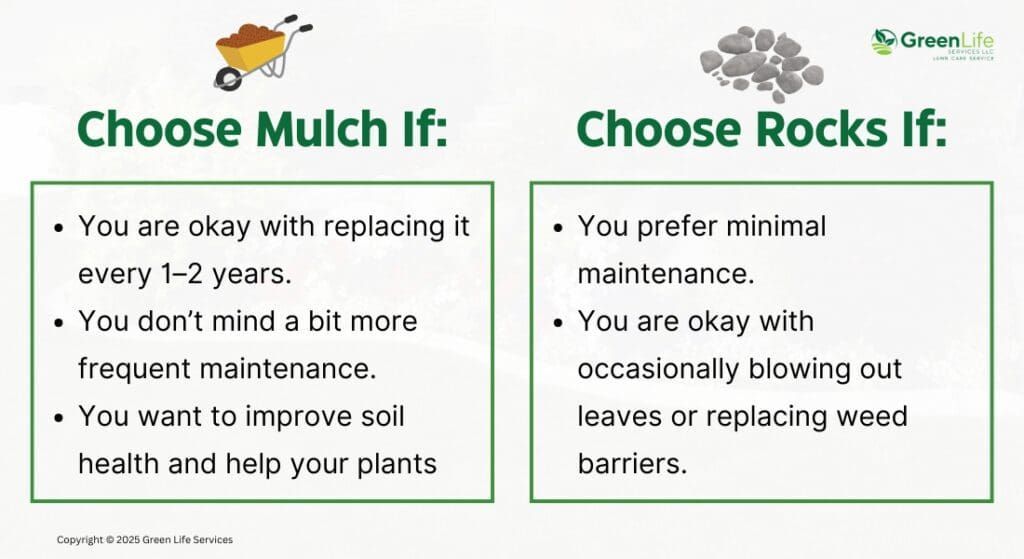
So, Which One Should You Choose? Rocks or Mulch?
The choice between rocks and mulch comes down to your preferences, landscaping needs, and how much time you’re willing to spend on maintenance.
Choose Rocks If:
- You want a long-lasting solution that doesn’t need frequent replacement.
- You are landscaping areas like pathways, under trees, or dry gardens where debris won’t easily collect.
- You prefer minimal maintenance and are okay with occasionally blowing out leaves or replacing weed barriers.
Choose Mulch If:
- You are looking for an affordable, soil-friendly option that’s easy to refresh yearly.
- You want to improve soil health and help plants thrive by reducing weeds, retaining moisture, and protecting roots.
- You are okay with replacing it every 1–2 years and don’t mind a bit more frequent maintenance.
Our Recommendation for Clarksville, TN
For Clarksville’s hot summers and cold winters, we recommend using mulch for flowerbeds and gardens. It helps your plants stay hydrated, protects roots, and improves the soil as it breaks down.
Use rocks only for decorative areas or low-maintenance zones like pathways, around trees, or decorative areas without plants.
Let GreenLife Services Handle Your Landscaping Needs
Are you still deciding between rocks or mulch for your garden? Let GreenLife Services help you!
We’re experts in creating beautiful, easy-to-maintain landscapes in Clarksville, TN, and nearby areas. We’ll take a look at your yard and help you choose whether rocks or mulch is better for your yard.
We offer free quotes with zero obligation. We’re happy to help, so feel free to call us!
Key Takeaways
- Mulch vs. Rock: Organic mulch is ideal for improving soil health, while rock mulch offers long-term durability.
- Climate Considerations: Use rock in dry climates and mulch in areas with heavy rain.
- Cost Comparison: Mulch is cheaper upfront but requires regular replacement, whereas rock is a one-time investment.
- Maintenance Needs: Both mulch and rock require periodic upkeep to control weeds and maintain appearance.
- Consult an Expert: Professional advice ensures your landscaping project meets your goals effectively.
Did you know that there are so many types of mulch? There are wood chip mulch, bark mulch , cedar mulch , and many others. So, which one would be best for your yard? Head to our blog , to learn about mulch and other landscape design tips.
FAQs
Q. Is it better to put rocks or mulch next to your house?
A. Rocks are better for areas near your house if you want low maintenance and better drainage. They don’t decompose, so they last longer, but they can get hot and may not be great for plants. Mulch is better for improving soil and keeping plants healthy, but it needs to be replaced regularly. Avoid placing wood mulch directly against your home to prevent pest issues.
Q. What is the disadvantage of mulching?
- Needs to be replaced regularly.
- Can attract pests like termites if placed near the house.
- Too much mulch can harm plants.
- High-quality mulch can be expensive.
- May allow weeds to grow if not applied properly.
Q. What is the best rock to replace mulch with?
River Rock:
Great for a natural look and good drainage.
Lava Rock: Lightweight and good for insulating plant roots.
Pea Gravel: Small and smooth, ideal for pathways and gardens.
Crushed Stone: Affordable and versatile for most areas.
Q. What is the best thing to use for landscaping?
Mulch: Best for planting and retaining moisture.
Rocks: Great for low-maintenance areas and drainage.
Ground Cover Plants: A Living option for soil protection and greenery.
Gravel or Artificial Turf:
Perfect for minimal upkeep and dry areas.
